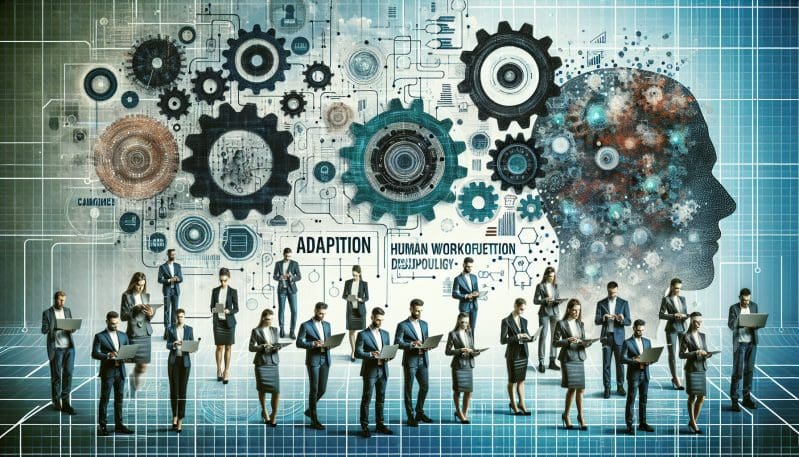Equipping the Workforce for Technological Disruption: Beyond the Buzzwords
- Home
- Equipping the Workforce for Technological Disruption: Beyond the Buzzwords

- Editors Desk
- January 12, 2024
- 0 Comments
In an era where terms like ‘artificial intelligence’ (AI), ‘machine learning’ (ML), and ‘automation’ stand at the forefront of both opportunity and uncertainty, the workforce is navigating through one of the most significant transitions in labor history. The allure of a technologically-driven future brings with it a host of challenges, notably the real-world skills gap that threatens to widen the chasm between the ‘haves’ and the ‘have-nots’ in the job market.
The skills required in the past decade are evolving at an unprecedented pace, leaving many workers scrambling to stay relevant. As industries integrate AI, ML, and automation into their daily operations, the demand for advanced digital skills is soaring. Yet, there is a striking issue at play – the availability of workforce that is adept at these technologies is failing to keep up with the demand.
The crux of the matter lies in education and training programs that are yet to catch up with the enormity of these technological advancements. Traditional educational systems are being challenged to overhaul their curricula, to foster a generation of workers who are not just literate but fluent in technology. This overhaul calls for a resilient educational framework that doesn’t just introduce individuals to the rudiments of digital technology but immerses them into the practicalities of AI, ML, and automation.
However, equipping the workforce with the right skills is only one piece of the puzzle. Cultivating a culture of continuous learning and adaptation is paramount. This means nurturing an environment where workers, irrespective of their age, are encouraged to upskill and re-skill themselves. For the older demographic, in particular, who might perceive these changes as a threat to their job security, it is crucial to demystify technology and present it as an avenue for career development rather than replacement.
The reality is, this transformation isn’t just about the individual; it’s a collective effort that demands a symbiotic partnership between academia, industry, and government. Academic institutions need to align their programs with the current and emerging industry needs, ensuring that graduates are employable right off the bat. Industry leaders must invest in training and development programs that not only serve their immediate skill needs but also contribute to the broader ecosystem. And governments have a pivotal role in enacting policies and initiatives that support lifelong learning and ensure that no worker is left behind—particularly those who are marginalized or at-risk.
As we hurtle towards this technologically abundant future, it is imperative that we place an unwavering focus on inclusion and equitable access to opportunities. This means reaching out to communities that historically have had limited access to technological education – women, minority groups, and the economically disadvantaged. It’s about building a future of work that is diverse, inclusive, and reflective of the society it serves.
In conclusion, as we peel away the layers of jargon and sensationalism, what emerges is a clear imperative: to proactively prepare our workforce for the seismic shifts brought about by technological disruption. By fostering a culture of continuous learning, establishing cross-sector partnerships, and championing inclusivity, we can ensure a future that leverages technology not to replace, but to enhance and empower human capacity. Let’s work towards a future where no worker is left behind in the race towards a more automated and intelligent world.

Leave A Comment